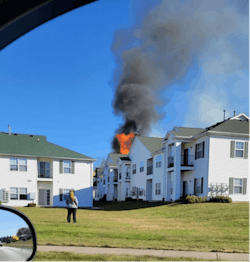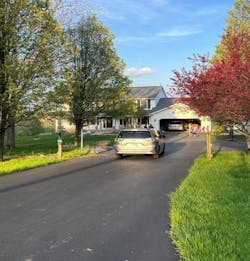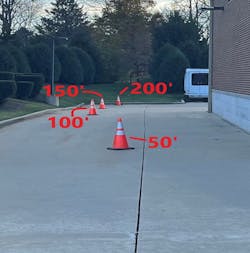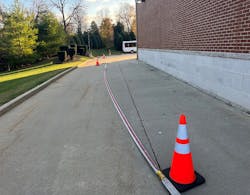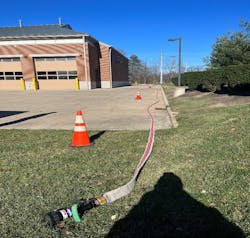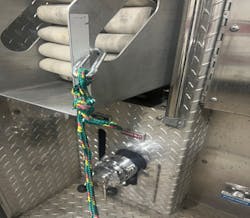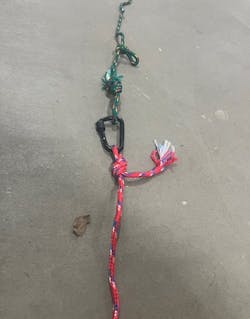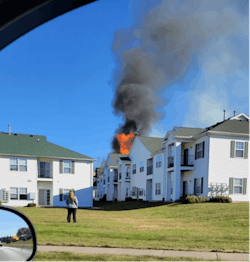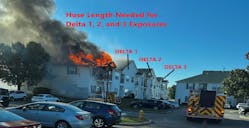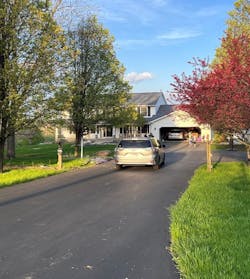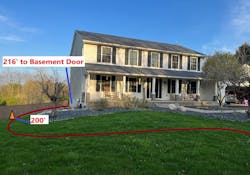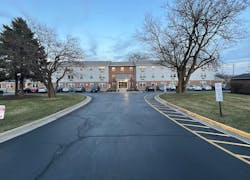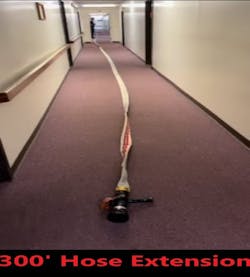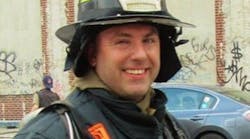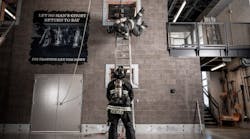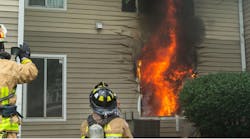The first-arriving unit has many decisions to make immediately, hose selection being one of them. Spotting distances is an excellent quality of a firefighter. Deciding on the correct hose package to deploy or extend can make or break an initial attack. Staying proficient in this task assists the company officer with developing an incident action plan (IAP).
Hop in your rig and tour your district.
In conjunction with this, often, a typical 200-ft. attack line is sufficient for most suburban/residential-style homes. During your drive, spot houses/apartments/commercial buildings that might need that additional footage. Are you prepared for that incident? How much hose will you need to stretch to the second or third floor of an apartment or commercial building or to the basement in a large structure?
Lay cones
When the whole team uses the same mental tape measure, it assists with proper hose length selection. That means that you must get comfortable with spotting distances on the fly.
Without initially measuring, lay cones every 50 feet (or the length of hose that your department carries) from your engine to the end of your initial attack line.
Based on the initial tour of your district, what lengths of hose are you working with? What will your initial attack package look like for these structures? How do you plan to deploy it? Does your department simply add lengths of hose to your attack line? Do you have a dedicated preplumbed attack line? Does your department stretch/extend with a gated wye?
Preplanning these distances and stretches ahead of time achieves water on the fire more efficiently. That said, gpm and psi matter also. You must make the proper nozzle selection based on the size of fire, but you can’t apply the gpm if your hose can’t reach the fire.
Stretch it
See how calibrated your mental tape measures are. Stretch your attack line and see whether your couplings and nozzle line up with the cones. Did you pass the test?
Now is the time for you and your crew to sit in the driver’s and officer’s seats. Get comfortable with how this looks. Retain the image of these bright cones and where they are placed. Use this as a mental jogger when spotting distances. How far will your initial attack line stretch? Will it be a sufficient length to make the attack?
Depth perception often can be our enemy. One of our missions in the fire service is to recognize such enemies and train/preplan to overcome the known hazards. Learning to spot distances helps the firefighter in all aspects of the job. You must always be ready to base your actions off of current conditions and rapidly create an IAP to go to work.
Rope method
Rope can be used in areas where cones can become difficult to see (e.g., large buildings, multistory facilities, obstructed pathways). I use four 50-ft. sections of polypropylene rope that are connected by carabiners. This is an inexpensive rope setup that can be picked up at any hardware store.
Every 50 feet, the color of rope changes to signify a 50-ft. section of hose.
You can connect the rope to your pump panel and walk through the building of choice easily. This is a good method to measure out buildings in your district and to preplan for future hose lays or extensions.
Know the distance
Get out and train. Know your distances to make a successful stretch. Learning and training on depth perception helps every member when it comes to making the correct selection.
With rapidly changing conditions, decisions often are quick. You must train on ensuring that these decisions are calculated and sufficient for the hazards that are present.
Always plan/train for the future and read the building conditions. Make the educated choice, formulate an IAP, and communicate the plan with the team to carry out the task safely and efficiently.
Sidebar 1
Take a Tour
Length does matter! Proper hose length selection is very important when you create your incident action plan. Review your district.
Sidebar 2
District Findings: Single-Family House
What did you find?
What’s your inspection results and IAP?
Fire Location:
- Basement fire
- Bravo side walkout basement
- Driveway obstruction
What hose will you grab?
How will you extend your line?
Sidebar 3
District Findings: Multifamily residence
What did you find?
What’s your inspection results and IAP?
- Fire location
- First floor
- Second floor
- Third floor
What hose will you grab?
How will you extend your line?
